几种动词谓语句优秀课件
- 格式:ppt
- 大小:851.00 KB
- 文档页数:55
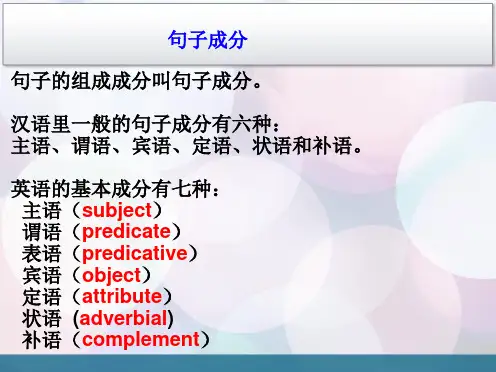
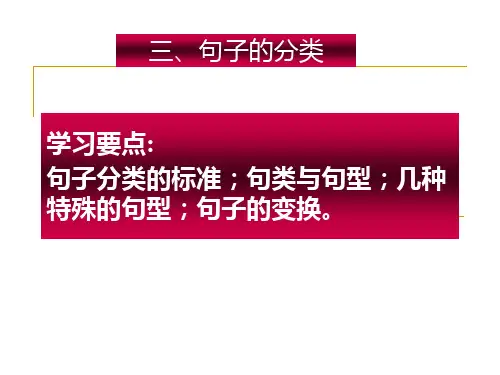
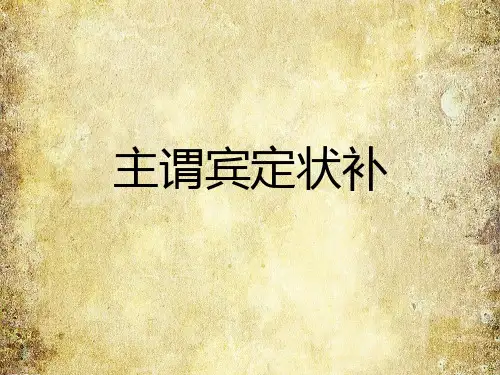

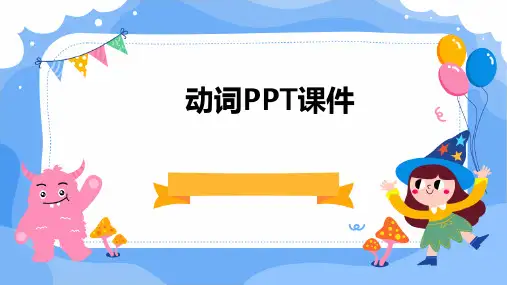
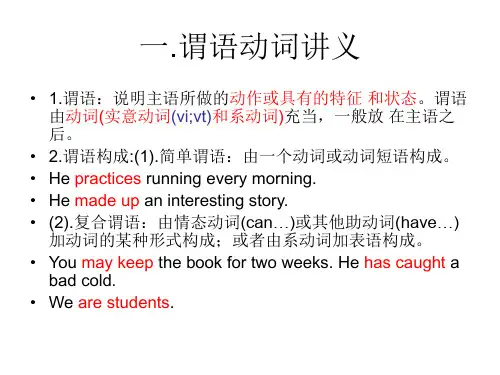
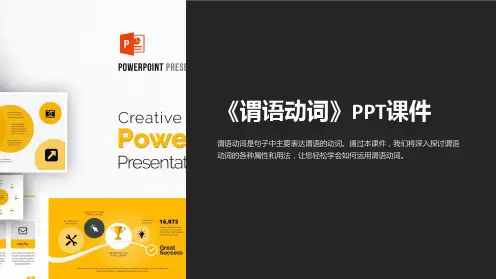
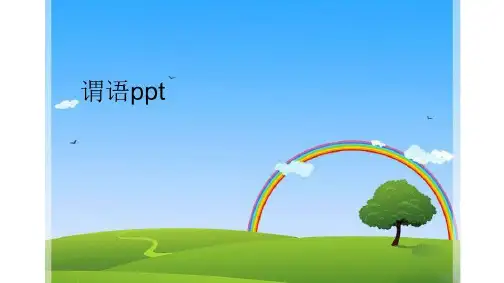
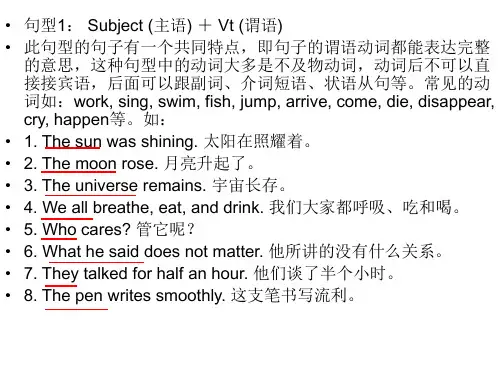

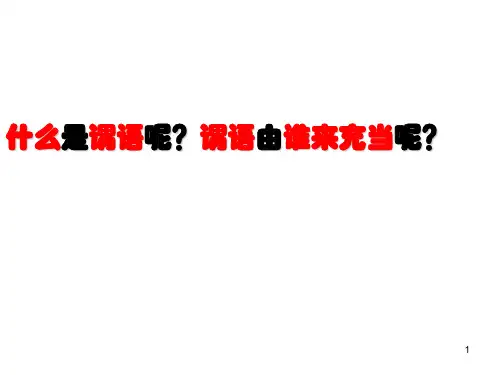
谓语的分类课件谓语的分类⼀、⾏为动词,是表⽰⾏为、动作或状态的词。
它的词义完整,可以单独作谓语。
具体划分⼜可以分及物与不及物,主要看后⾯是否带宾语。
及物跟宾语,不及物不跟宾语如第⼀张图中的think便是及物动词⼆、连系动词,表⽰主语“是什么”或“怎么样”的词,它虽有词义,但不完整,所以不能单独作谓语,必须跟表语⼀起构成合成谓语。
它有三类1是,2感觉,三变如第⼀张图中的be三、助动词,只能与主要动词⼀起构成谓语表⽰不同的时态,语态,句⼦的否定和疑问。
如第⼆张图⽚中have的简写便是助动词,构成时态。
第三张图中的do四、情态动词,本⾝虽有意义,但不完整,其表⽰说话⼈的能⼒、说话⼈的语⽓或情态,“可能”“应当”等。
如第四张中的can。
1、除了原形的be 之外,对于不同⼈称代词以及单数名词和复数名词,be 会有各种变化形式和缩写形式。
概括⼀下有七种形式:be, am, is, are, was, were, been, being。
它们与⼈称代词和名词单、复数的搭配关系是:现在时I am, you are, he/she/it/ is, we/you/they are;名词单数、不可数名词⽤is,复数⽤are。
缩略式I'm, you're, he's, we're, you're, they're否定缩略式I'm not, isn't, aren't过去时I was, you were, he/she/it/ was, we/you/they were;名词单数、不可数名词⽤was,复数⽤were。
否定缩略式wasn't, weren't过去分词been现在分词being2、在句⼦中,be有两种主要作⽤:⼀是作为系动词(The Linking Verb),本⾝可以作⽤谓语动词;⼆是做为助动词(The Auxiliary Verb),与谓语动词⼀起构成各种时态和被动语态等。